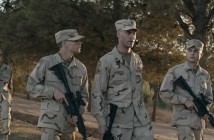The celebrity

Since the beginning of the film industry, directors have built special relationships with their actors, from D.W. Griffith and Lillian Gish to Martin Scorsese and Leonardo DiCaprio. One of the more interesting director-actor teams in film history remains Josef Von Sternberg and Marlene Dietrich. The two first worked in Germany, where Von Sternberg made the fantastic The Blue Angel in 1930. As the first major German sound film, it quickly found success, which soon spread around the world. It was supposed to be an Emil Jannings vehicle, but everyone looked at that cabaret singer, Dietrich. Overnight, she was a star and Paramount brought Von Sternberg back to Hollywood with Dietrich in tow. Over the next five years, the two would work on six films together, each as sexy and as exotic as the previous.
When they arrived in Hollywood, there was no time to rest. Work started right away on Dietrich’s first American film, Morocco, which co-stars Gary Cooper and Adolphe Menjou.
In Morocco, Dietrich plays, just like in The Blue Angel, a singer, except this one has been around the block or two. Amy Jolly (Dietrich) arrives in Morocco to take just another job at a club and her exotic beauty quickly catches the eyes of two men. First, there is the wealthy La Bessiere, a dapper man (as all Menjou characters are) she meets on the boat to Morocco. The second is Legionnaire Private Tom Brown (Cooper), a soldier who has become accustomed to the women of Morocco and has decided that his life is going nowhere. Suddenly, he sees Amy at the club and decides to pursue her.
It’s obvious, though, that Amy is no ordinary girl and Tom genuinely falls in love with her. The trouble is, though, that he’s also having an affair with an officer’s wife, which gets him in deep trouble and assigned to a dangerous mission. Amy decides to marry La Bessiere, but when Tom’s unit comes back, Amy finds herself having to decide whether to stay with a wealthy man she doesn’t really love or go back to a man she does.
When seeing Morocco for the first time, it’s important to throw out all of your previous expectations for a film made in 1930. It is amazing how different Dietrich is from every other glamor star in Hollywood at the time. From her accent to her singing to her looks, she was stunning and different from head to toe. There is also that famous scene in the film during her first song when she shocks a woman (and the viewer) by kissing her, as she wears a tuxedo. Von Sternberg was also ahead of his time as a director. Although this was made very early in the sound era, you wouldn’t know based on the way he uses the camera and lighting. Unlike other directors, he successfully carried his unique style from the silent days into the sound era seamlessly.
It is also important to note where this film sits in Cooper’s career. After his two-minute scene in 1927’s Wings shot him to stardom, he became Paramount’s default matinee romantic idol. While his role in Morocco isn’t one of his best, it is a perfect example of what he was paid to do at this time in his career and he did it well.
Morocco remains an intriguing gem from the early ’30s. After this film, Dietrich and Von Sternberg continued to work, finally calling it quits after the successive financial failures ofThe Scarlet Empress and The Devil Is A Woman(both fantastic films, by the way). Unfortunately for Von Sternberg, Dietrich thrived in Hollywood, but he could never find stable work again and was often fired before finishing films.
Morocco is one of Von Sternberg’s finest works and is on the Library of Congress’ National Film Registry. Amazingly, although Dietrich worked in Hollywood for three decades, her role in the film earned her her only Oscar nomination.
More Articles By Daniel S Levine
Featured Stories
- Win 1 of 5 copies of “It’s Raining Fish and Spiders” by Bill Evans(TheCelebrityCafe.comContests)
- Win 1 of 5 copies of “The Vegetarian Kitchen Table Cookbook”(TheCelebrityCafe.comContests)
- Fan TheCelebrityCafe.com and win a $100 American Express Gift Card(TheCelebrityCafe.com Contests)
- Michelle Obama gets death threat from policeman(TheCelebrityCafe.com)
- Report: Actor Michael Clarke Duncan rushed to hospital(TheCelebrityCafe.com)
.






